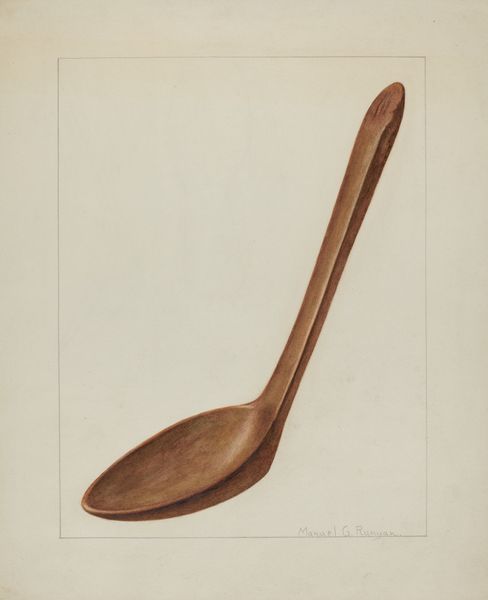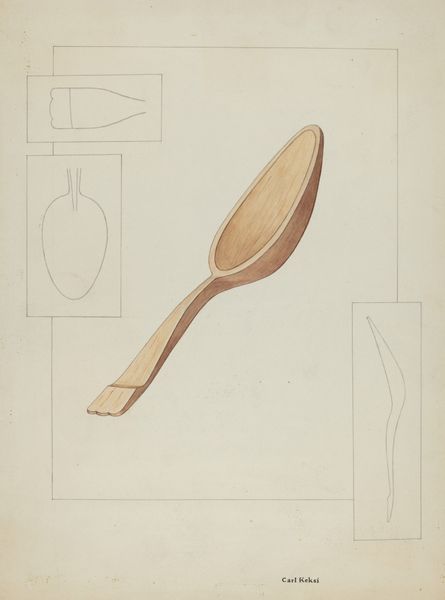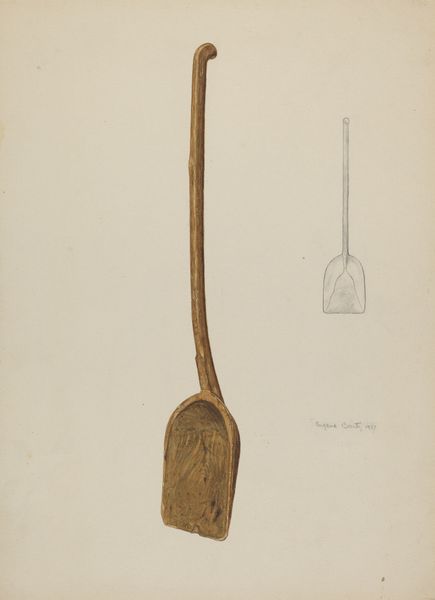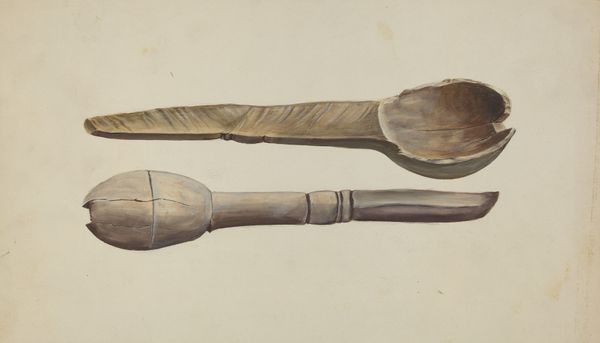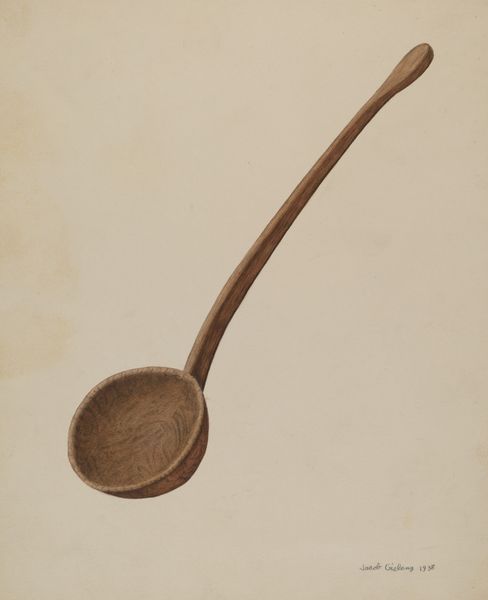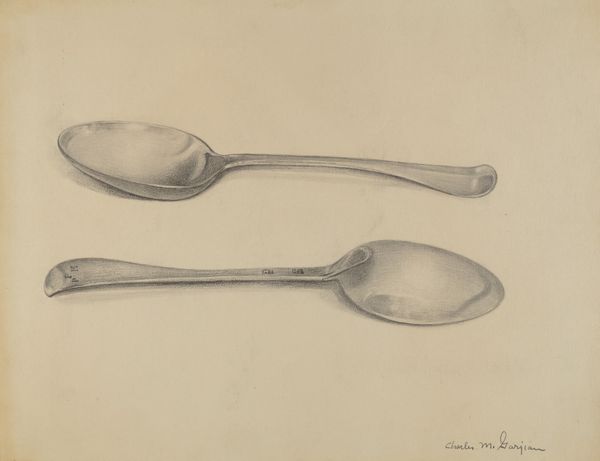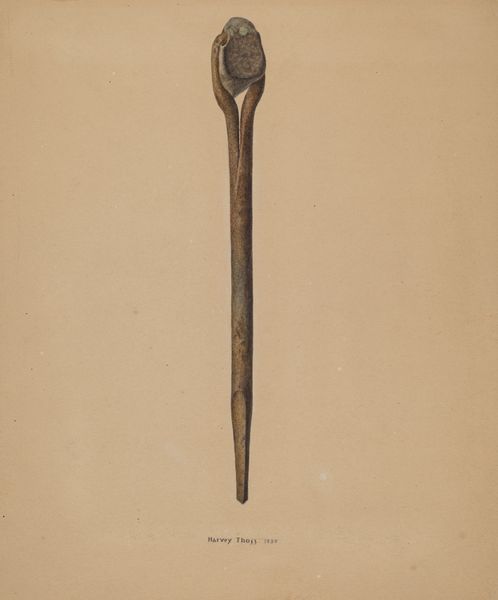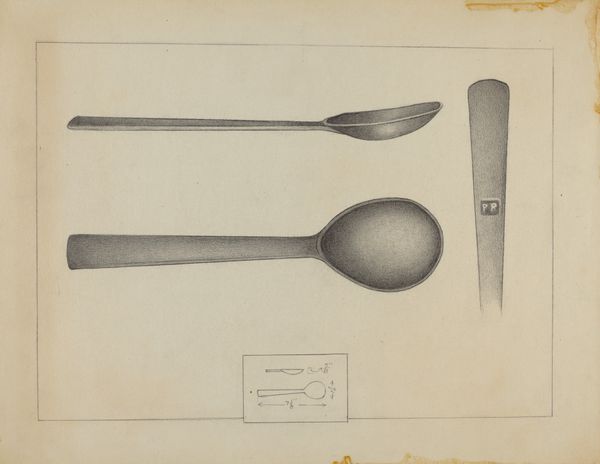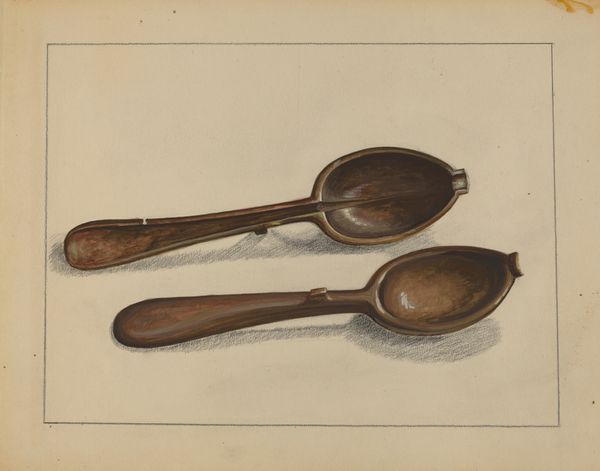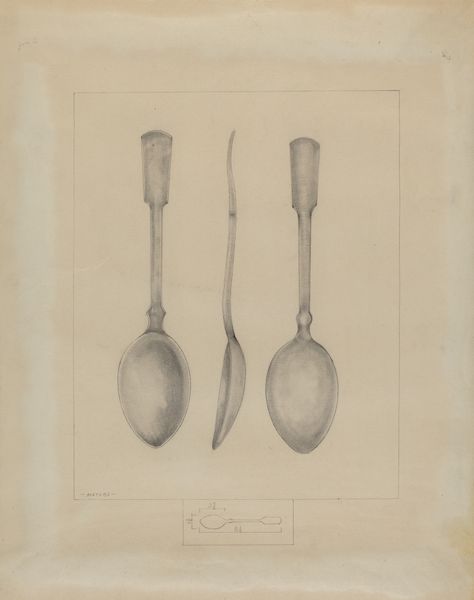
drawing, watercolor
drawing
watercolor
watercolor
Dimensions overall: 26.7 x 36.7 cm (10 1/2 x 14 7/16 in.) Original IAD Object: 22 1/2" long; 5" wide; 2 1/2" deep
Curator: Today, we're looking at Roberta Elvis’ watercolor and drawing piece, “Bishop Hill: Wooden Spoon,” circa 1936. Two wooden spoons are laid out against the paper. The artist even notes at the bottom, almost like an engineer, that the rendering is half life-size. What’s your initial take? Editor: A humble stillness pervades this work. It is immediately apparent. The sepia tones used in the watercolor and drawing capture the essence of simple domesticity and the unadorned craftsmanship on display here. Curator: Yes, there is something profoundly connected to the earth and work in Bishop Hill, which was the site of a Swedish religious commune and a center for utopian socialism in the 19th century. These spoons feel like a testament to the ethos of simple living, practicality, and handcraft. This image gives form to a communal aesthetic where handmade objects like these wooden spoons become both necessary utensils and bearers of cultural meaning. The spoons might also represent gendered labor roles and domestic organization of the community too. Editor: Let us examine the structural composition further. Notice the artist’s astute attention to detail. Each textural gradation in the wood's grain, for example. There's such elegance in rendering light and shadow, which gives the two spoons their sense of depth, each resting with simple weight on the starkly visible blank page. Curator: Well, that visible, empty background space serves as an indication of scarcity and restraint. As viewers, it begs the question: what was it like making the wood, finding it, carving it, using it to make the simple fare of daily life. Considering this work's potential historical moment of creation during the Depression, one must not discard a sense of resilience and reliance on homespun material and means. The fact that she painstakingly rendered the image on paper only underscores the spoons’ value, right? It suggests both functional value and representational importance. Editor: Undoubtedly. But consider as well how Roberta Elvis transforms ordinary utilitarian objects through the watercolor medium into refined visual artistry. Even as she documents craft traditions, she asks us to contemplate notions of artistic representation, craftsmanship and the intrinsic beauty in basic form. It’s not just the labor, it’s the gaze. Curator: Right. The making visible here is more than making objects for living. The value, indeed, lies in the act of translation—giving it cultural resonance. Editor: To summarize then, we have uncovered layers of meaning – an illustration as much as an appreciation. Curator: Precisely. Thank you for joining me to unpack Roberta Elvis' “Bishop Hill: Wooden Spoon.”
Comments
No comments
Be the first to comment and join the conversation on the ultimate creative platform.
